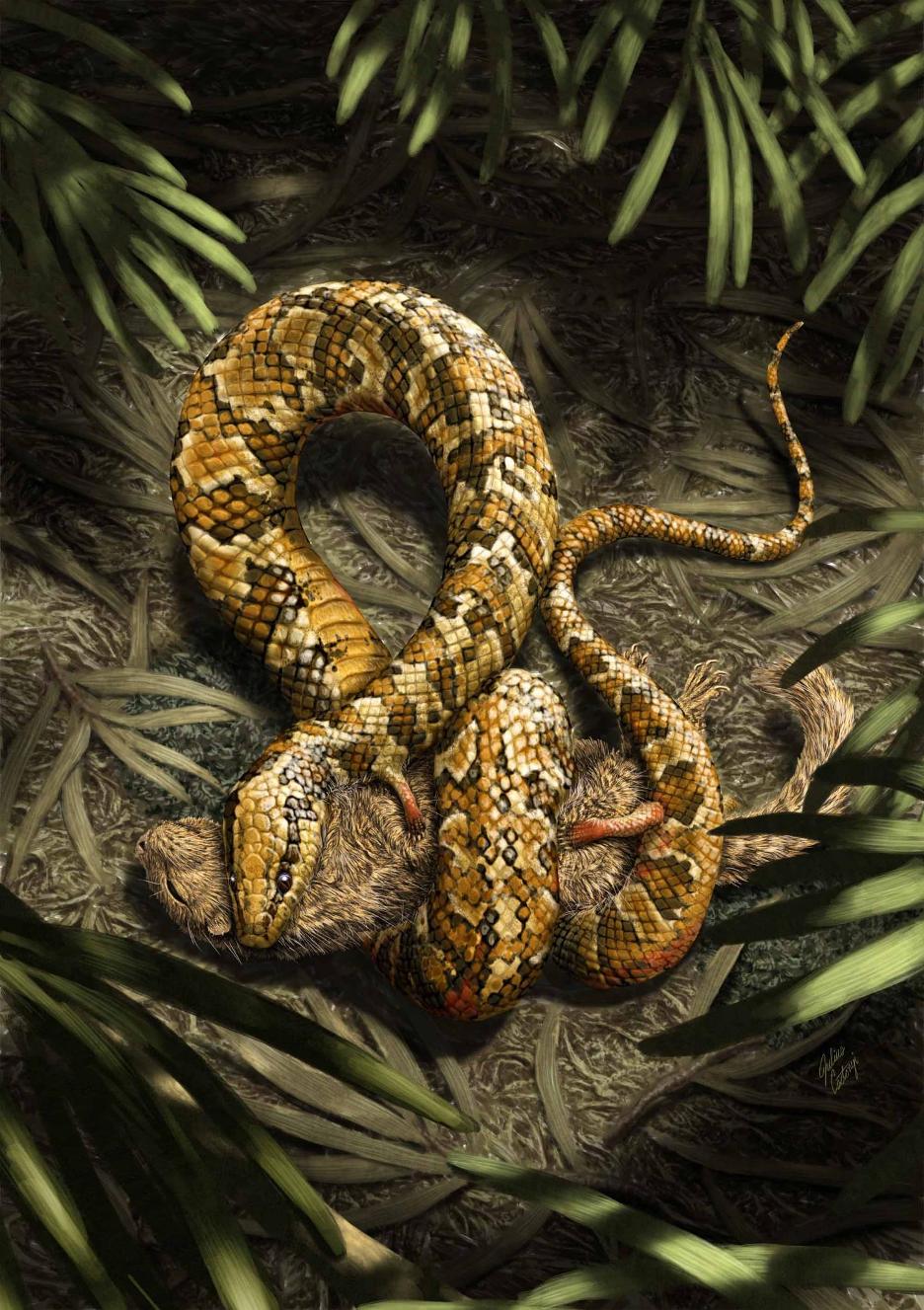Podcast: Play in new window
BOB HIRSHON (host):

A four-legged snake. I’m Bob Hirshon and this is Science Update.
A fossilized four-legged snake sat, unappreciated, in a museum for years until University of Portsmouth paleobiologist David Martill noticed it and told paleontologist Nicholas Longrich, at University of Bath. At first, Longrich doubted it could really be a fossil representing the evolutionary step from lizards to snakes.
NICHOLAS LONGRICH (University of Bath):
The odds of finding it seemed so ridiculously small I thought it was pretty unlikely it was actually a snake.
HIRSHON:
But seeing the complete skeleton convinced him.
LONGRICH:
You could look at the entire thing and just see snake-like features in the jaws, in the teeth, in the vertebrae, in the proportions, and even preserved scales.
HIRSHON:
In the journal Science, the researchers describe how the Cretaceous period snake likely used its long-fingered limbs to grasp prey. The skeleton also provides evidence that snakes descended from land, rather than marine, animals. I’m Bob Hirshon, for AAAS, the science society.
